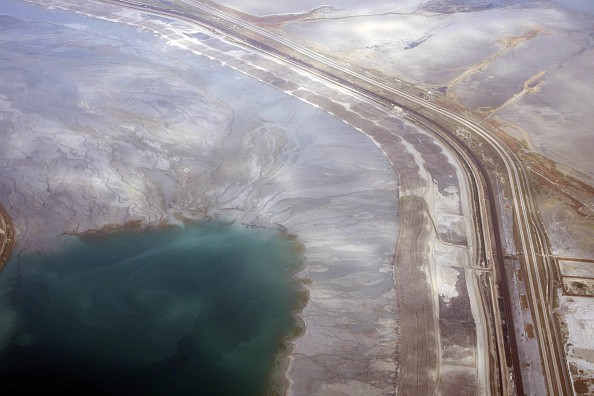Researchers in Utah are trying to make people aware of the possible collapse of the Great Salt Lake ecosystem as low water levels make threats to destroy vulnerable colonies of microbes that support the system.

Great Salt Lake
A senior geologist with the Utah Geological Survey, Michael Van Denberg, says that microbialites - underwater reef-like rock mounds, are at risk of being prone to the air.
Van Denberg told KCPW that when the lake level is down, with the structures in the open, this might lead to their death - and the attractive microbial mat inhabiting on top of these structures will start eroding off the top.
Dr. Bonnie Baxter in Great Salt Lake Institute at Westminster College reveals that the condition could signify destruction for animals the lake is supporting, since the microbes make up the base of the whole ecosystem. Baxter said the uncomplicated food chain most people are aware of pertaining the lake is that birds visit the lake and they feed on the invertebrates like the brine shrimp and the brine flies.
She said, the brine shrimp and brine flies rely on these structures and the scary part is that if these microbialites are threatened the whole ecosystem will collapse. The water level of Great Salt Lake is predicted to reduce below the past recorded low of 4191.4 feet in the future and may keep dropping into the fall.
Also Read: Great Salt Lake Continues to Shrink to Alarmingly Low Levels Due to Drought
Great Salt Lake's Microbialites
While the time it takes for the microbial mats to die is little, it can take years for them to come back to normal if and when they are reimmersed in water, said Geologist Van Denberg.
Baxter says that millions of already endangered migrating birds won't be able to wait for years for their food source to be recovered. The death of the microbialites of Great Salt Lake, she says, could serve as a "whole chain of events in the West" for birds.
An ecosystem is said to be collapsed when it loses its unique biotic or abiotic features from all past occurrences. This Ecosystem collapse could be reversible and it is not entirely similar to the extinction of species.

Risk of Ecosystem Collapse
If an ecosystem collapses, it can bring about a catastrophic reduction of carrying capacity and ecological collapse and can also constitute an existential risk to the populations of humans.
In spite of the strong empirical proof, expecting collapse is a complicated problem. The collapse can take place when the distribution in the ecosystem reduces below the least sustainable size, or when chief biotic processes and features vanish because of environmental degradation or disturbance of biotic interactions.
These various pathways to collapse can be employed as the basis for evaluating the danger of ecosystem collapse. Though states of ecosystem collapse are usually defined with regards to quantity, few studies appropriately describe change from its original state towards collapse
Related Article : Only 3% of the World's Ecosystems Still in Pristine Conditions
For more news, updates about the ecosystem and similiar topics don't forget to follow Nature World News!
© 2025 NatureWorldNews.com All rights reserved. Do not reproduce without permission.





